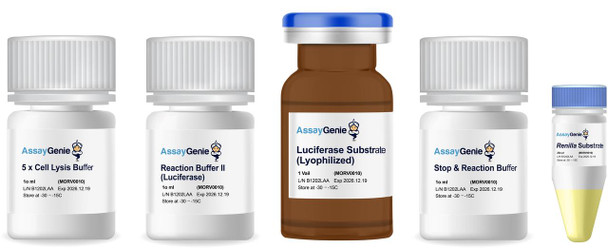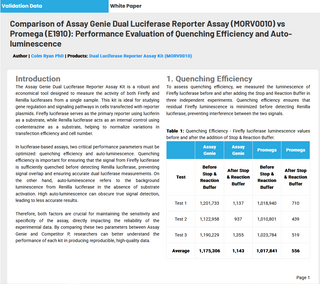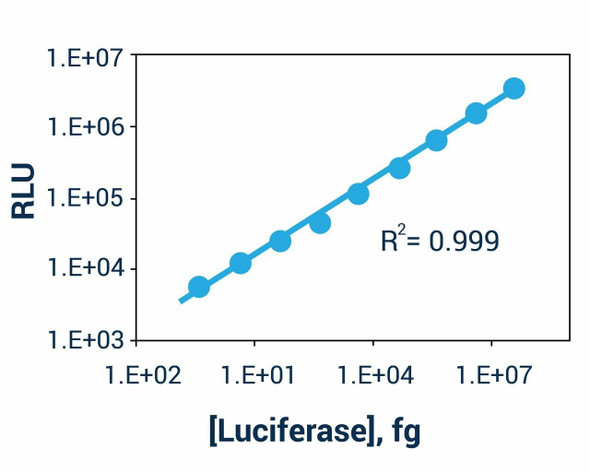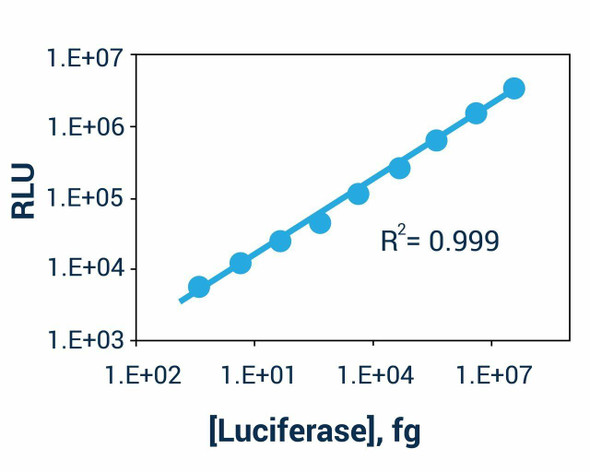The Dual Luciferase Reporter Assay Kit sequentially measures the activity of Firefly and Renilla luciferases from the same sample. This kit is an excellent choice to detect changes in signalling pathways and gene regulation from cells transfected with reporter plasmids containing genes encoding Firefly and Renilla luciferases. In the assay, Firefly luciferase is detected with Luciferin as a substrate and then Renilla luciferase is detected with coelenterazine as a substrate. The Dual Luciferase Reporter Assay Kit can be used for the sensitive detection of the expression of Luciferase regulated by various gene elements.
Usually, the transcriptional regulatory element is cloned upstream of Firefly luciferase, or the 3'-UTR regulatory region is cloned downstream of firefly luciferase. The transfected cells are induced by a corresponding stimulator and lysed to determine the luciferase activity. The stimulatory-inducing effect of the regulatory elements is evaluated by luciferase activity. Renilla luciferase acts as an internal reference control for optimizing transfection efficiency and cell number. Firefly luciferase catalyzes the emission of Luciferin at 560 nm and Renilla luciferase catalyzes the emission of coelenterazine at 465 nm. This product is an economical alternative to other expensive Dual Luciferase assay kits.








